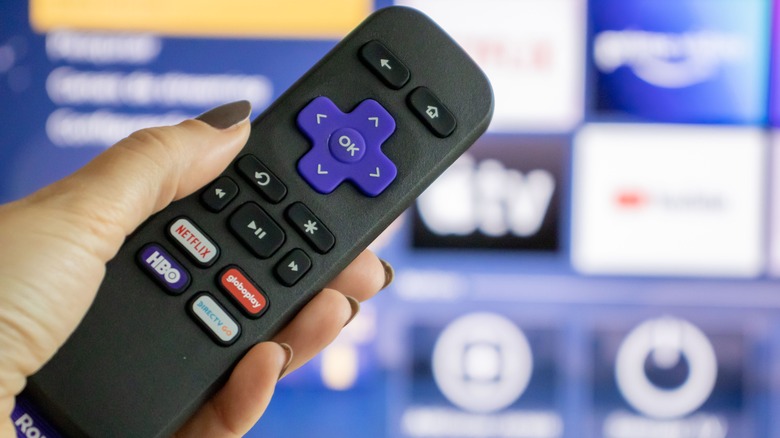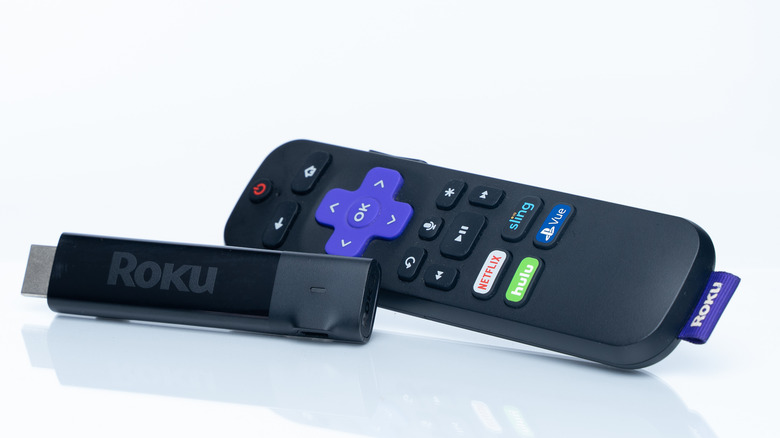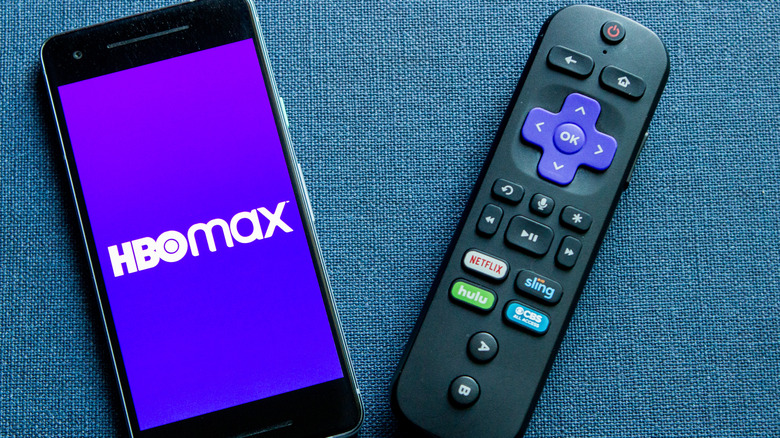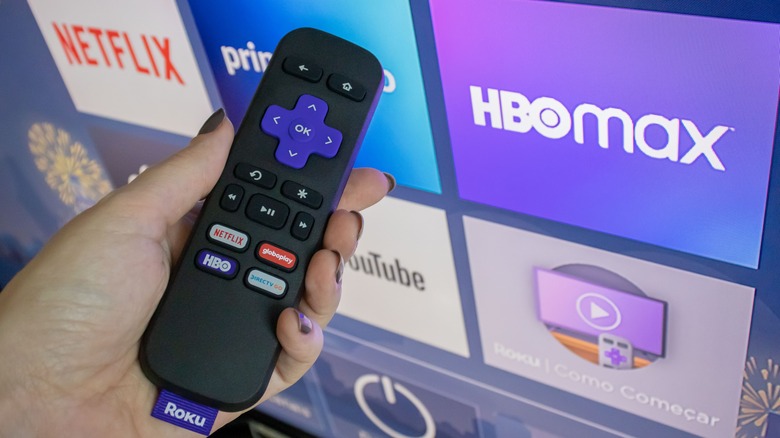Roku Streaming Stick 4K Vs. 4K Plus: What's The Difference?
Cord-cutters and cable naysayers have been turning to streaming devices and subscriptions for a while now, and a lack of cable in a household is much more commonplace these days. As such, a Roku Streaming Stick is a convenient way to turn your regular TV into a streaming entertainment center, and get off the cable merry-go-round. Just stick it right in an HDMI slot, and voila, it's a night of Netflix for the whole family. While Roku offers a wide variety of options for streaming players, the Streaming Stick is a nice middle ground between the affordability of the Roku Express and the visual muscle of a Roku Ultra or Streambar.
Roku offers two models of Streaming Stick: the Streaming Stick 4K and the Streaming Stick 4K Plus. As the names imply, both of these players offer full 4K fidelity, along with the usual selection of features like popular streaming channels and voice command support. If they're so similar, though, it can be hard to decide which one to get.
4K and 4K Plus differences
In terms of internal components and general functionality, the Streaming Stick 4K and 4K Plus are completely identical. They both have support for 1080p and 4K video, both have access to the same selection of streaming apps, and they both connect to the internet via 802.11ac dual-band MIMO Wi-Fi. If you put the physical Streaming Sticks side-by-side, you probably wouldn't be able to discern which one is the 4K and which one is the 4K Plus. However, the 4K costs $49.99, while the 4K Plus costs $69.99.
What are you getting for that extra $20? Well, you're getting exactly one thing: a better remote. The regular Streaming Stick 4K comes with the Roku Voice Remote, which can control the Roku with either basic inputs or voice commands. The 4K Plus, on the other hand, comes with the Roku Voice Remote Pro, the next step up from the usual Voice Remote.
The Roku Voice Remote Pro
The Roku Voice Remote Pro has the usual navigational buttons and voice input, alongside some additional buttons and functionality.
On the side of the remote is a hands-free button, allowing you to enable or disable passive voice command detection for when you don't want to keep pressing the microphone button. The Remote Pro also features a headphone jack, which you can plug a pair of personal speakers in to isolate the sound. That's a feature you would normally only be able to use through a paired smartphone with the regular Voice Remote.
In addition to the usual quartet of channel shortcut buttons on the remote's lower body, the Voice Remote Pro also features a pair of programmable shortcut buttons. If there are a couple of Roku channels you use regularly that aren't mapped on the remote by default, you can use those buttons to quickly jump to them from anywhere. Finally, unlike the standard Voice Remote, which requires regular batteries, the Voice Remote Pro features a rechargeable battery that you can plug into a wall outlet.
Which version should you get?
If all you want is to watch shows and movies on your Roku in the highest fidelity possible (for a streaming stick, at least), you should be just fine getting the regular Streaming Stick 4K. Both Streaming Sticks offer the same overall streaming quality, so there's no reason to pay the $20 upcharge if you don't care about the better remote.
That said, that Voice Remote Pro can be a blessing if you share a living space with other people. Having a dedicated headphone jack in the remote, rather than having to go through your phone, makes private viewing and listening much simpler, and the shortcut buttons are nice for a household with many viewing preferences. If you and several other people are all going to be juggling ownership of the Roku, you may enjoy having a more advanced remote to properly accommodate all of you.



